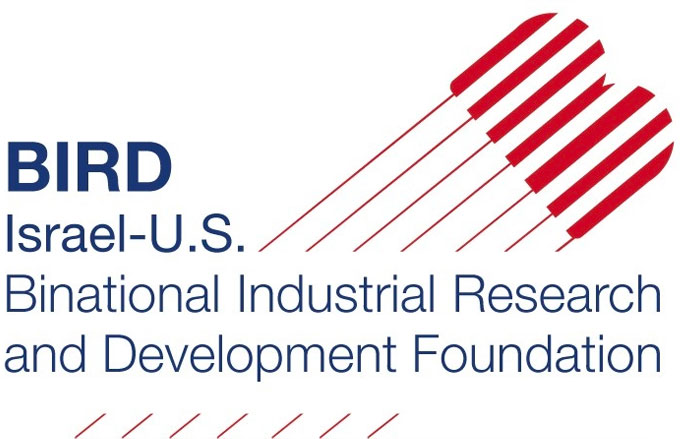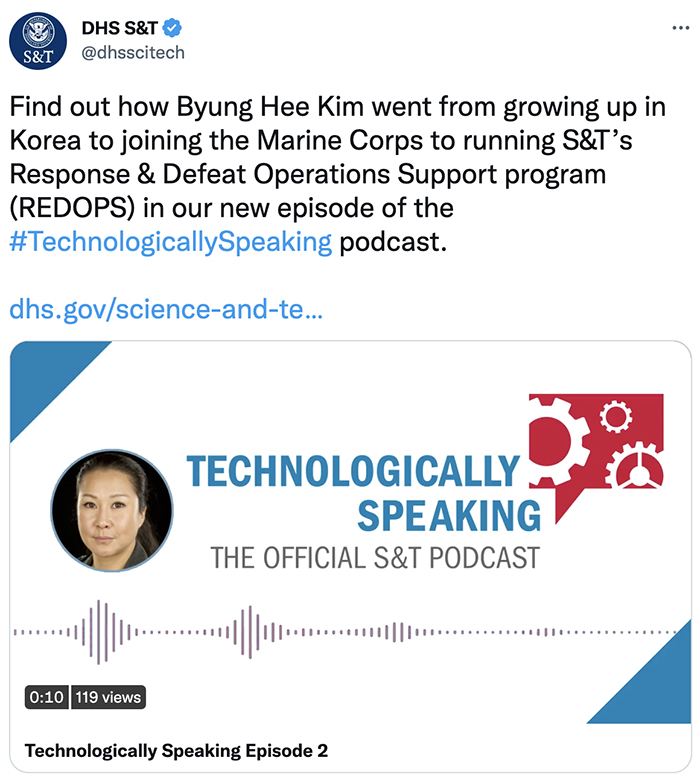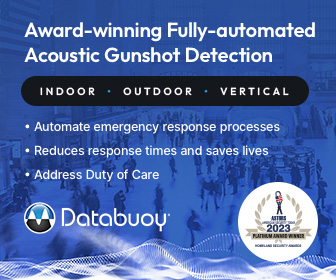
The cybersecurity industry has experienced record-breaking investments and continuous growth in recent years; most companies have focused on developing solutions for banking and insurance companies, defense, eCommerce, and other verticals with generous budgets.
Cybersecurity requirements on the national level are growing faster than industry can support. Many companies, utilities, and small and medium-sized ports and airports have a constant need to adopt such enhanced cybersecurity solutions.
However, they must keep pace with the increasing number and complexity of requirements.

To address these challenges, the U.S. Department of Homeland Security (DHS) Science and Technology Directorate (S&T), a Multi-Award Winner in the Annual ‘ASTORS’ Homeland Security Awards Program, the Israel National Cyber Directorate (INCD), and the Israel-U.S. Binational Industrial Research and Development (BIRD) Foundation, established the BIRD Cyber Program, a joint initiative to enhance the cyber resilience of vulnerable critical infrastructure in both the United States and Israel.
The BIRD Foundation’s Board of Governors recently approved funding for four joint cybersecurity projects submitted by U.S. and Israeli companies in response to the first BIRD Cyber solicitation.
The projects were jointly selected through a rigorous review and award process by DHS S&T, INCD, and the Board of Governors of the BIRD Foundation.
In addition to the BIRD grants, the projects will leverage private-sector funding, boosting the total value of the projects to approximately $10 million.
The joint projects approved for BIRD Cyber Program funding are as follows:
Rescana, based in Tel-Aviv, Israel, and Trend Micro in Irving, Texas, to develop an operational cyber threat intelligence capability to inform cyber risk maritime decision-making.
Salvador Technologies based in Rehovot, Israel, and Bastazo from Fayetteville, Arkansas, to develop a solution for Industrial Control Systems (ICS) vulnerability management, monitoring, and rapid recovery approach from cyber-attacks.
Cyber 2.0 based in Rishon Letzion, Israel) and Cincinnati/Northern Kentucky International Airport (CVG) from Hebron, Kentucky, to develop a platform for airports and air traffic that will provide continuous cyber visibility, real-time monitoring, and data traffic detection to minimize risks and boost compliance with regulations.
A fourth project has also been approved to develop an airport cyber protection solution across the entire attack surface.
The BIRD Foundation promotes collaboration between U.S. and Israeli companies in various technological fields for joint product development. It also assists by working with companies to identify potential strategic partners and facilitates introductions.

“The first year of the BIRD Cyber program has yielded projects that will deliver cutting-edge solutions to pressing cybersecurity challenges facing the U.S. and Israel,” explained Megan Mahle, Director of the DHS S&T Office of Industry Partnerships.
“We are pleased to jointly invest with our Israeli partners in these innovative projects and anticipate that they will deliver new capabilities to enhance the cybersecurity posture and overall resilience of vital critical sectors in both nations.”
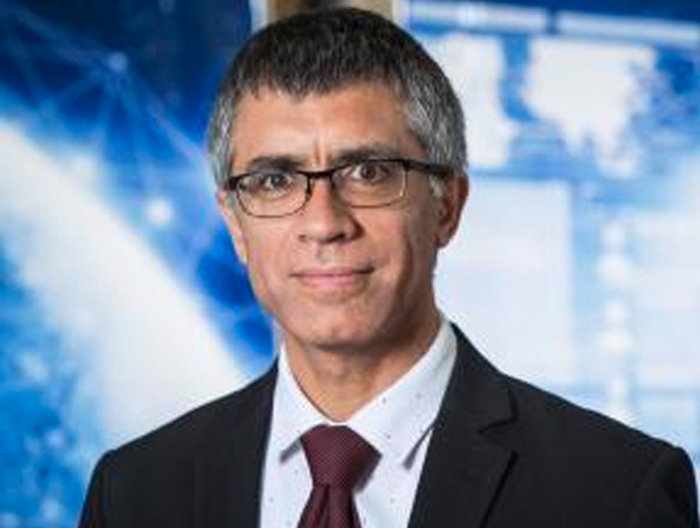
“INCD and DHS are strategic partners, working together to overcome cyber threats and keep strengthening national cyber resilience,” added Aviram Atzaba, Executive Director for International Cooperation of INCD.
“We are proud to partner with DHS to develop cutting-edge solutions for small and medium-sized businesses and critical infrastructure cybersecurity.”
“This year’s joint projects address key challenges in ICS, maritime and airport sectors. The BIRD mechanism continues to strengthen the strategic alliance between Israel and the United States.”
“We are proud to announce the first grants for this important program, said Jaron Lotan, Executive Director of the BIRD Foundation.
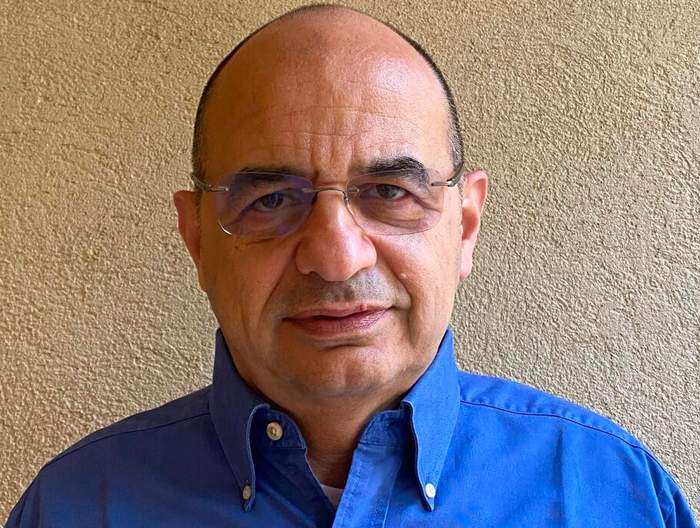
“The selected projects are a result of a comprehensive selection process to answer the cybersecurity needs of both countries.”
“The BIRD Cyber program advances the U.S.-Israeli partnership through cyber innovation and collaboration, to build a more secure and resilient infrastructure.”
“We welcome the opportunity to cooperate with DHS and INCD, and to support the development of innovative technologies that enhance safety for both countries and look forward to supporting this sector for many years to come.”
The BIRD Foundation encourages and facilitates cooperation between U.S. and Israeli companies in a wide range of technology sectors and offers funding for selected projects.
The BIRD Foundation supports projects without receiving any equity or intellectual property rights in participating companies or their projects.
BIRD funding is repaid as royalties from sales of commercialized products due to BIRD support. The BIRD Foundation provides funding of up to 50% of a project’s budget, beginning with R&D and ending with the initial stages of sales and marketing.
The BIRD Foundation shares the risk and does not require repayment if the project fails to reach the sales stage.
To learn more, please visit https://www.birdf.com/.
DHS S&T Honored in 2022 ‘ASTORS’ Homeland Security Awards Program
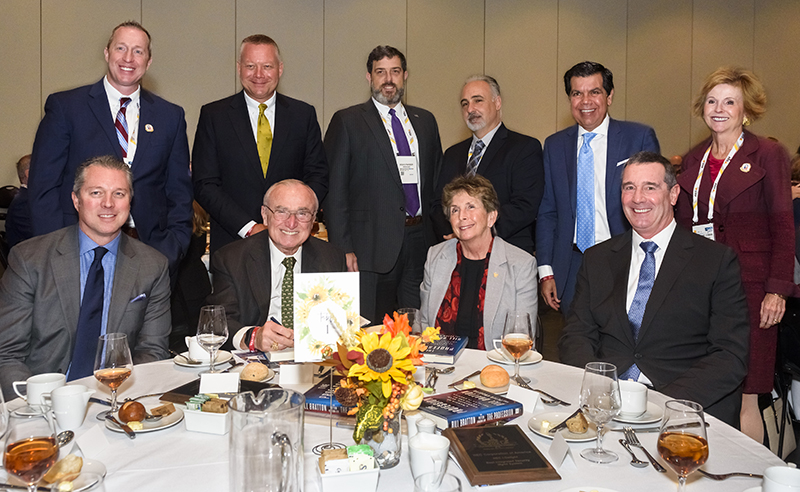
American Security Today’s Annual ‘ASTORS’ Awards is the preeminent U.S. Homeland Security Awards Program, and now entering it’s Eighth Year, continues to recognize industry leaders of Physical and Border Security, Cybersecurity, Emergency Preparedness – Management and Response, Law Enforcement, First Responders, as well as federal, state and municipal government agencies in the acknowledgment of their outstanding efforts to Keep our Nation Secure.
DHS Science & Technology (S&T)
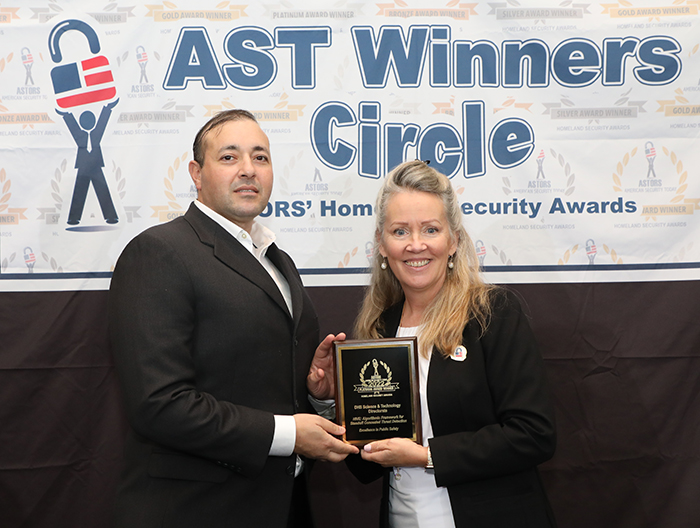
 Excellence in Public Safety
Excellence in Public Safety
-
HIVE: Algorithmic Framework for Standoff Concealed Threat Detection
-
The real-time detection of concealed threats is critical for protecting public transportation, sports arenas, and other open, difficult-to-secure environments.
-
New sensing technologies, such as standoff active-RF imaging, can help security personnel screen customers and bags quickly without affecting traffic flow. However, accurately detecting threats in the complex environment of crowds carrying everyday items remains a challenge.
-
The HIVE (Hierarchical Inference for Volumetric Estimation) is a custom deep convolutional neural network architecture that interprets volumetric video generated by standoff, active-RF imagers, for standoff concealed threat detection to enable new approaches to protect people and infrastructure in areas where traditional security checkpoints are not feasible.

DHS Science & Technology (S&T)
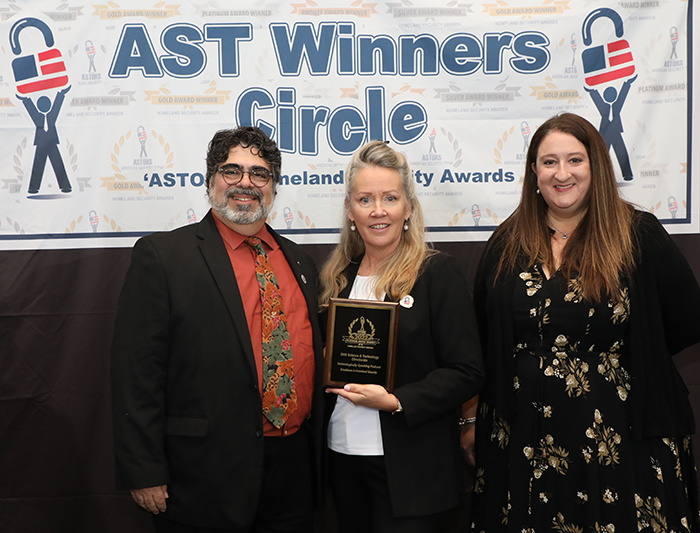
 Excellence in Homeland Security
Excellence in Homeland Security
-
Technologically Speaking Podcast
-
Technologically Speaking is a new podcast series that delivers insightful, thought-provoking, and unscripted conversations about timely national security challenges and the scientific solutions S&T is developing to tackle them. We even sprinkle in some behind-the-scenes stories, personal anecdotes, little-known facts, and technology tidbits so you can get to know S&T, and its people, a little better.

-
These casual conversations are unlike anything S&T has done before, but innovation is in their DNA.
-
To learn more, and access Season One of the S&T Technologically Speaking Podcasts, go to www.dhs.gov/science-and-technology/technologically-speaking-podcast-season-one to listen in on everything from S&T experts on the untapped potential of bomb techs, how S&T tackles food defense, to the complexities and imperfections of how technology recognizes faces.
DHS S &T in Collaboration with the U.S. Coast Guard

 Excellence in Maritime Safety & Security
Excellence in Maritime Safety & Security
-
Project Titanic
-
One hundred and ten years after the RMS Titanic’s tragic collision with an iceberg, DHS S&T is developing new technology to help the U.S. Coast Guard improve maritime safety and navigation in the North Atlantic Ocean.
-
When complete, Project Titanic will fuse satellite-based Synthetic Aperture Radar imagery with ship reporting systems to detect, identify, and report iceberg locations to the maritime community.
DHS S&T in Collaboration with the Federal Emergency Management Agency (FEMA)
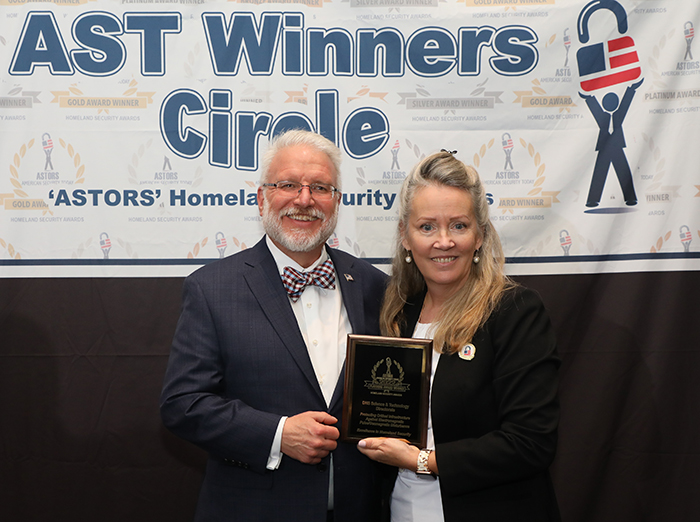
 Excellence Homeland Security
Excellence Homeland Security
Protecting Critical Infrastructure Against Electromagnetic Pulse/Geomagnetic Disturbance
-
In October of 2022, DHS S&T released a report of operational approaches to protect the National Public Warning System from an electromagnetic pulse (EMP).
-
“Electromagnetic pulses, whether caused by an intentional EMP attack or a naturally occurring geomagnetic disturbance from severe space weather, could disrupt critical infrastructures such as the electrical grid, communications equipment, water, and wastewater systems, and transportation modes,” explained Brent Talbot at the 2022 ‘ASTORS’ Awards Luncheon.
-
“This could impact millions of people over large parts of the country. It is critical to protect against the potential damage an EMP event could cause.”
-
The report, a collaborative effort between the DHS Science and Technology Directorate (S&T), the Federal Emergency Management Agency (FEMA) Integrated Public Alert and Warning System (IPAWS) Program, and the Cybersecurity & Infrastructure Security Agency (CISA), also recognized in the 2022 ‘ASTORS’ Awards Program, summarizes recommendations that federal, state, local agencies, and private sector critical infrastructure owners and operators can employ to protect against the effects of an EMP event.
DHS Science & Technology (S&T)
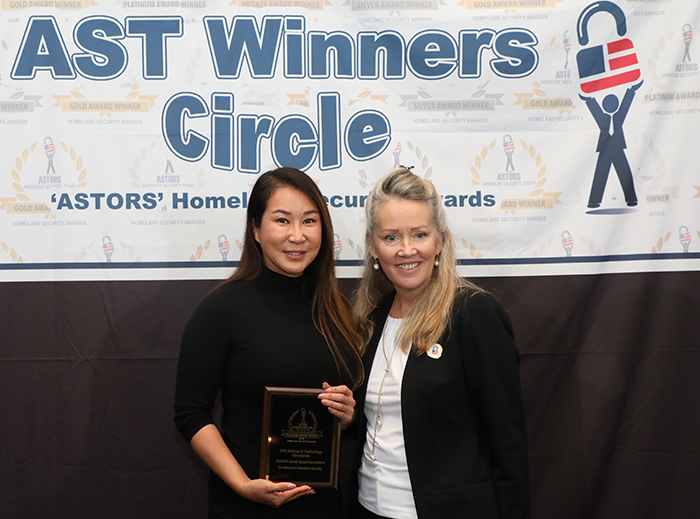
 Excellence in Homeland Security
Excellence in Homeland Security
-
REDOPS Bomb Squad Innovations
-
It takes a special kind of person to be a bomb technician—someone who is brave, disciplined, determined, levelheaded, and creative.
-
Operators must effectively employ critical thinking and problem-solving skills while working in stressful, potentially life-threatening situations. As a result, bomb technicians’ ability to expect the unexpected and adjust accordingly has created a consistent pipeline of do-it-yourself (DIY) inventions to solve everyday issues they face, and the DHS S&T works to validate and distribute these new capabilities.
-
“We have direct communication with state and local bomb squads across the country through S&T’s First Responder Resource Group (FRRG),” explained REDOPS Program Manager Byung Hee Kim at the 2022 ‘ASTORS’ Awards Luncheon.
-
REDOPS also participates in the U.S. Army-funded Raven’s Challenge exercise series, U.S. Bomb Technicians Association events, National Tactical Officers Association events, and other state and local exercises to identify user innovations.
Donald A. Bansleben, Ph.D.
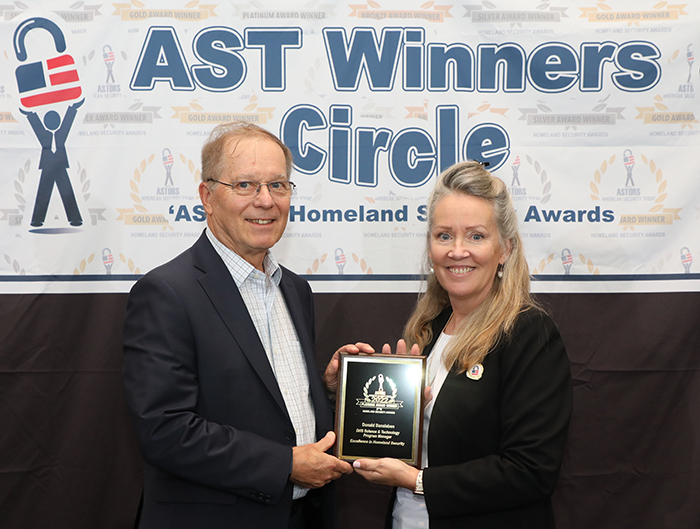
 Excellence in Homeland Security
Excellence in Homeland Security
-
“One of our core missions at DHS S&T is to prevent terrorism and enhance security,” explains Program Manager Dr. Don Bansleben, of the DHS S&T Office of Mission and Capability Support at the 2022 ‘ASTORS’ Awards Luncheon.
-
“A crucial goal is to rapidly identify and respond to an event involving chemical and biological weapons and minimize the impact to the public and critical infrastructure.”
-
DHS S&T establishes projects to address these challenges, as well as opportunities for technology developers to test and evaluate their technologies in real-world settings and urban transportation environments.
-
*DHS S&T has now been recognized with Multiple Awards for Six Consecutive Years in the Annual ‘ASTORS’ Homeland Security Awards Programs.













